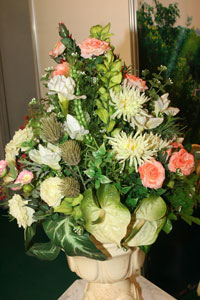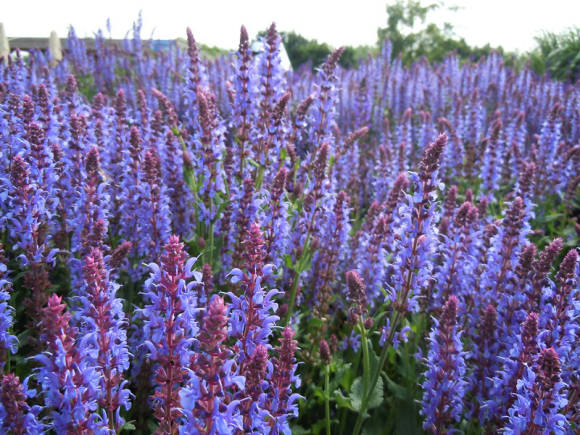 Like all living things on our earth, plants have a sensitivity, and no less than a person. When cut, forcibly deprived by a person of a source of food and water, the flower experiences stress, which is one of the reasons for the wilting of flowers in a bouquet. Scientists have found that in cut plants, respiration is unstable: at first, its intensity decreases sharply, and then, before the final wilting of the plant, it becomes more frequent.
Like all living things on our earth, plants have a sensitivity, and no less than a person. When cut, forcibly deprived by a person of a source of food and water, the flower experiences stress, which is one of the reasons for the wilting of flowers in a bouquet. Scientists have found that in cut plants, respiration is unstable: at first, its intensity decreases sharply, and then, before the final wilting of the plant, it becomes more frequent.
In order for the bouquet to stay in the vase longer, keep freshness and delight you with its appearance longer, there are a fairly large number of rules and tricks.
When preparing a container for a bouquet or floral arrangement, it is necessary to thoroughly rinse the container with hot water and soap. Glass containers that have lost their transparency are well cleaned with diluted acetic acid. After the vessels have been treated with any chemical detergents, they must be thoroughly rinsed with clean water.
If your bouquet has lost some of its freshness on delivery or in the sun, you can try to restore its freshness by using one of the following methods:
- well spray the bouquet, cut the stems, put the flowers in cold water and place in the refrigerator for 1 hour
- moisten the leaves and stems with cold water, wrap the flowers completely in thick paper or cloth, put in a cool place for 1 hour
- stems of lilac, jasmine, bird cherry, roses and dahlias can be cut by 1-2 cm, dipped in a vase with a water temperature of 45-500C, spray flowers with cold water and tightly wrapped with paper or cloth for 40-50 minutes
When installing the vase, remember that cut flowers should not be placed in direct sunlight, drafts and near heating and heating appliances. Before putting the cut flowers in the water, remove all the lower leaves from the stems, and also the thorns from the roses. This will reduce moisture evaporation and prevent the proliferation of bacteria in the water.
One of the main reasons for the wilting of flowers in a vase is a decrease in the sugar content in the tissues and dehydration of the plant. This happens most often due to the blockage of blood vessels by air bubbles. To avoid this, the end of the stem is immersed in water and an oblique cut is made with a sharp knife or pruner. After that, the flower is no longer removed from the water. If such a need arises, then the operation is repeated again.
Flowers with a solid stem, for example, roses or chrysanthemums, are split 3-4 cm and a piece of a match is put into the split of the stem. This enhances the absorption of moisture. In plants with a soft stem - tulips, daffodils, calla lilies - the lower part of the peduncle is cut or scratched with a needle or pin. Such a simple procedure will have a positive effect on the well-being of your bouquet.
There are some subtleties to preserve the freshness of a bouquet of flowers with a hollow stem, for example, dahlias or lupines. To keep these flowers in the water longer, water is poured into the stem, and the hole is plugged with cotton wool or a piece of gauze. If the cut plants secrete abundantly milky juice, then to stop it, the end of the stem is dipped in boiling water for 2-3 seconds or burned over a fire.

Flowers should be periodically sprayed with cold water, the water in the vessel should be changed daily, the stems of the plants should be washed and the sections should be renewed. At night, flowers should be placed in deep water (up to a flower or inflorescence).
Various substances can be added to the water to prolong the life of cut flowers. Today on sale there is a fairly large assortment of preparations for preserving cut flowers in indoor conditions: "Chrysal", "Bouquet", "Live Rose", "Fresh Flowers".
However, you can use simple home remedies as well. To increase the flowering period in a bouquet of carnations, asters, sweet peas, roses, lilacs, freesias, lupins and tulips, you can add a little sugar to the water.Added 3 teaspoons of sugar and 2 tablespoons of vinegar (or a few crystals of citric acid) to 2 liters of water will significantly refresh the look of carnations, roses, gesso and delphinium. Aspirin works well on dahlias, roses and chrysanthemums (1 tablet per 1 liter of water); on camellia - salt; for lilac - citric acid (2-3 g per 1 liter); for daffodils and tulips - potassium permanganate. Among the flowers there are also "bitter drunks". For example, aster. She feels much better ... in an alcoholic solution. Only its concentration should be moderate: one teaspoon of alcohol per liter of water.
And some more useful tips. It is a good idea to put a small piece of charcoal in the water where the flowers are. It will disinfect the water and prevent the stems from rotting quickly. A piece of coal can be replaced with a silver coin, as was done in the old days.
Photos from the exhibition "Flowers-2007"









